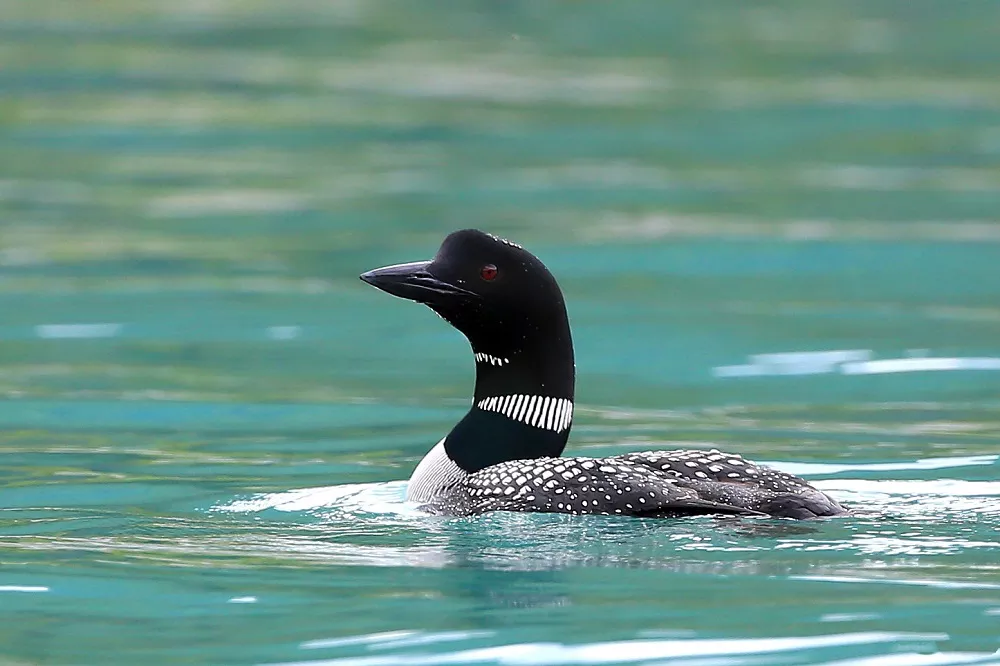The common loon (Gavia immer), also known as the great northern diver, is a captivating bird species renowned for its haunting call and striking appearance. Found in North America, common loons are known to be skilled divers, spending much of their lives in freshwater lakes and reservoirs. Understanding the dietary habits of these iconic birds is crucial for assessing their ecological role and promoting their conservation. In this article, we will take a closer look at what Common Loons eat and how they obtain their food.
What Do Common Loons Eat?
Common Loons are carnivorous, meaning that they primarily eat other animals. Their diet consists mostly of fish, but they will also consume crustaceans, mollusks, and aquatic insects. The specific types of prey that loons eat can vary depending on their location and the time of year. Some of the most common species of fish that loons feed on include perch, sunfish, trout, bass, and minnows.
Feeding Habits
Loons are expert divers and swimmers, which makes them well adapted for hunting underwater prey. They typically hunt by diving down to depths of up to 60 meters (200 feet) and swimming after their prey. Once they have caught their prey, they bring it back to the surface to swallow it whole or tear it into smaller pieces before consuming it.
One unique aspect of Common Loon feeding behavior is their ability to hold their breath for extended periods of time. Loons can stay underwater for up to 3 minutes while hunting, thanks to their specialized respiratory system and dense bones that help them sink more easily. This allows them to dive deeper and stay below the surface longer than many other aquatic birds.
Breeding Season Diet
During the breeding season, Common Loons may alter their diet slightly to meet the needs of their growing chicks. They may consume more small fish and invertebrates, such as crayfish and snails, to provide their young with the protein and nutrients necessary for healthy growth. Additionally, some loons have been observed feeding their chicks feathers or plant material, possibly to help with digestion or as a source of calcium.
Migration Diet
When preparing for migration, loons may also alter their diet to build up fat stores for the long journey ahead. They may consume larger fish or crustaceans to provide them with the extra energy they need to fly long distances. Some research suggests that loons may even selectively target specific types of prey during migration to maximize their energy intake.
Threats to Common Loon Diets
Despite their adaptability and specialized feeding habits, Common Loons face a number of threats that can impact their ability to find and obtain food. One major threat is habitat destruction, which can lead to the loss of important feeding areas for these birds. Loons are also vulnerable to environmental pollution, particularly from mercury contamination in fish, which can accumulate in their bodies over time and cause health issues.
Overfishing and the depletion of fish populations can also impact Common Loons, as they rely heavily on fish as a food source. In some areas, recreational fishing may also compete with loons for access to certain fish species.
Conservation Efforts
To protect Common Loons and ensure that they have access to adequate food sources, conservation efforts are underway across North America. These efforts focus on restoring and protecting wetland habitats, reducing pollution and other environmental stressors, and implementing sustainable fishing practices.
Additionally, researchers are working to better understand Common Loon diets and feeding habits so that conservation efforts can be targeted more effectively. For example, by studying the types and abundance of different prey species in common loon diets, scientists can identify areas where overfishing or other factors may be impacting local ecosystems.
Conclusion
Common Loons are fascinating birds with unique feeding habits that allow them to thrive in aquatic environments. Their diet consists primarily of fish, but they are also known to eat a variety of other aquatic animals. While loons face a number of threats to their food sources, conservation efforts are underway to help protect these birds and ensure that they have access to the prey they need to survive and thrive.
Related topics:


 Facebook
Facebook  Instagram
Instagram  Youtube
Youtube 